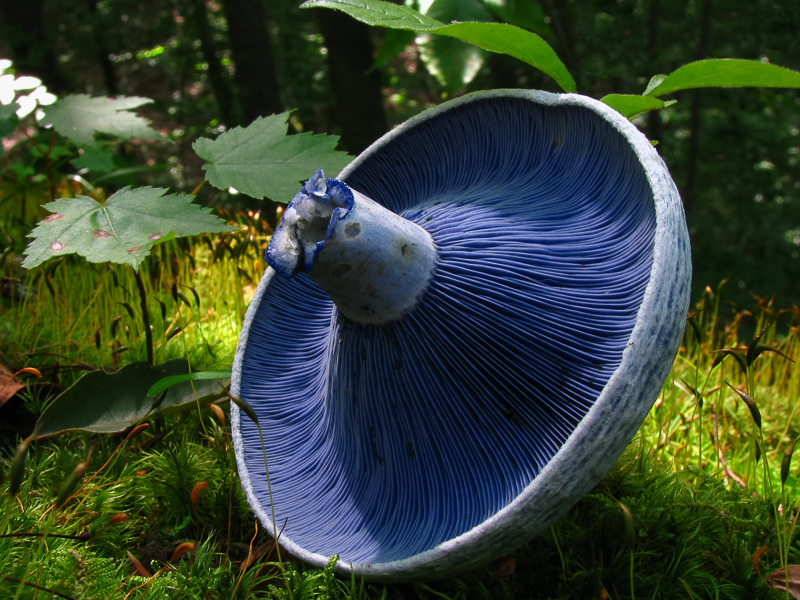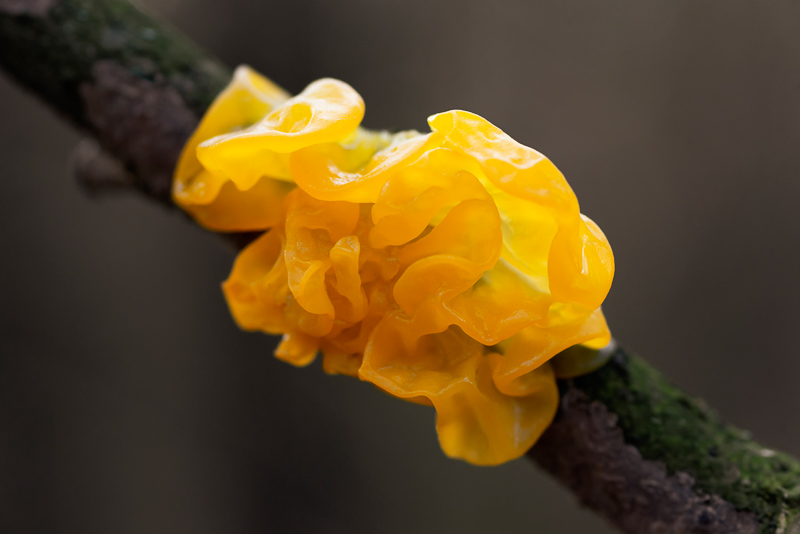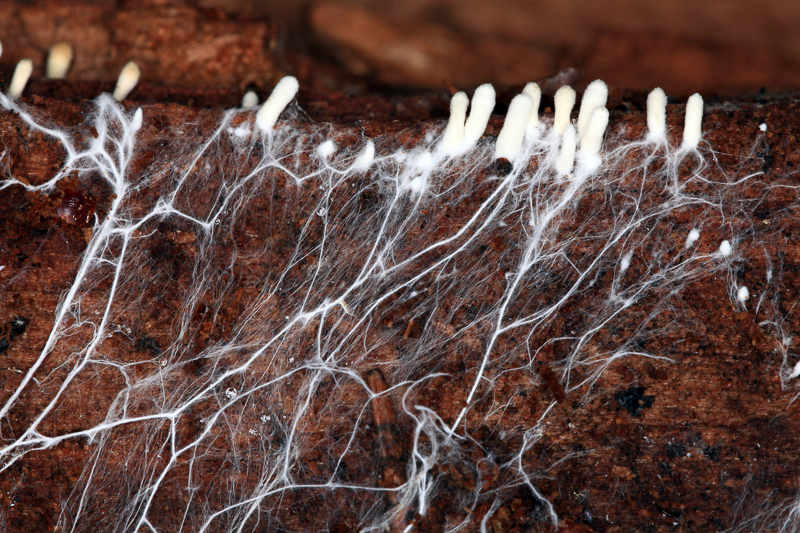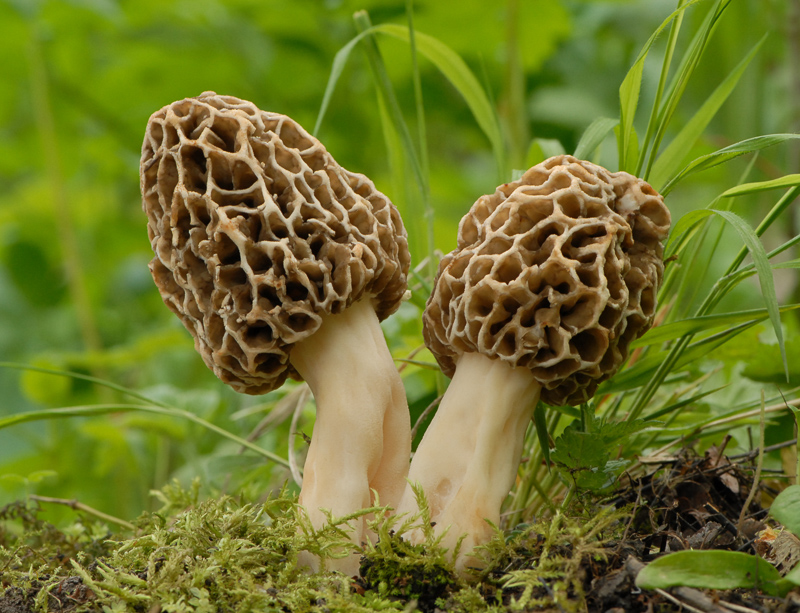By Dr. Cindy Lincoln, Naturalist Center Manager, NC Museum of Natural Sciences
“Fungi are everywhere but they are easy to miss…they are eating rock, making soil, digesting pollutants, nourishing and killing plants, surviving in space, inducing visions, producing food, making medicines, manipulating animal behavior, and influencing the composition of Earth’s atmosphere.” — Merlin Sheldrake, “Entangled Life, How Fungi Make Our Worlds, Change Our Minds & Shape Our Futures”
 Lactarius indigo mushroom. Photo: Dan Molter, CC BY-SA 3.0 via Wikimedia Commons.
Lactarius indigo mushroom. Photo: Dan Molter, CC BY-SA 3.0 via Wikimedia Commons.
At every turn, learning about fungi will challenge your understanding of this huge, mysterious group of organisms. Mushrooms may resemble human ears and brains, marine coral, tiny bird nests or large, white soccer balls while others have names like Witches’ Butter, Dead Man’s Fingers, Train Wrecker and Amethyst Deceiver. The diversity of mushroom colors, shapes, sizes and textures is astonishing! Many types of fungi do not even produce mushrooms, which are simply reproductive, spore-producing structures.
 Yellow Brain Tremella, a jelly fungus.
Yellow Brain Tremella, a jelly fungus.
Although fungi may often look like plants, they are more closely related to animals. Fungi are classified in their own Kingdom (the highest taxonomic rank used in classification), distinct from both plants and animals. In the fossil record, fungi pre-date flowering plants by millions of years. Fungi can’t make their own food using photosynthesis like plants; they obtain food by breaking down dead leaves and wood using special enzymes. Fungal cell walls are mostly composed of chitin, the same hard substance in the outer shell of crustaceans and insects. In contrast, plant cell walls are not composed of chitin but rather the sugar molecule cellulose.
 Mycelium is a root-like structure made up of branching filamentous cells called hyphae.
Mycelium is a root-like structure made up of branching filamentous cells called hyphae.
Fungi may be as small as a single-celled yeast or as large as Oregon’s giant honey mushroom, Armillaria ostoyae, considered to be one of the world’s largest organisms due to its vast underground network of mycelium. In addition to mushroom-producing fungi, other main types include yeast, molds, sac fungi (e.g., edible morels and truffles) and aquatic fungi (e.g., chytrid). Fungi can grow in almost every environment imaginable from deep oceans to searing deserts to frozen Antarctica and even survive high levels of radiation.
 Common morel mushrooms.
Common morel mushrooms.
We know fungi can be delicious to eat (could we live without bread and cheese?!) and drink (beer and kombucha), but did you know they play an essential role supporting all life on Earth? Most plants depend on subterranean fungal networks consisting of plant roots and their closely associated mycelia called mycorrhiza for the transport of nutrients, water and chemical signals. Fungi are also crucial for the decomposition of dead things like plants and animals. In a process called mycoremediation, fungi can be used to break down oil, pesticides and other pollutants in water and soil. Many important drugs such as penicillin, cyclosporine, statins, and cancer-fighting compounds are produced by fungi. There is increasing evidence that compounds produced by certain mushrooms may be effective in treating depression and PTSD. However, it is important to keep in mind that some mushrooms can be highly toxic to animals and humans, while other fungi can cause diseases of insects, reptiles, plants, and people.
Of the estimated millions of fungal species that are thought to exist on Earth, only a small percentage have been observed and described, and much remains to be discovered about this diverse and fascinating Kingdom.

